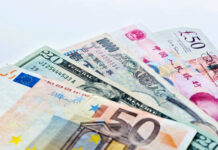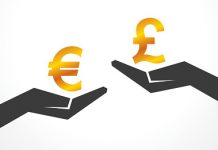Market sentiment has quickly deteriorated ahead of contentious US election and surging Covid outbreak. Markets have been blissfully ignoring warning signs for much for the autumn, but no longer. In Europe, the new infections in Spain, France, Switzerland the Netherlands, and the UK significantly surpass the highs in the first wave. The resurgence of Covid cases has triggered fears of further European and then US lockdowns (factoring in the delay). The market is rightly worried that tighter restrictions will only delay the much needed economic recovery. With the US election next week, the so-called `fear index` has jumped sharply in recent sessions. In March, policymakers rushed in to provide support in terms of massive fiscal and monetary policy reducing the period of stock market weakness. Yet this time central banks have exhausted their firepower and the absence of a new stimulus program out of Washington D.C specifically is worrying (Europe continues to squabble over the spending of €750 billion recovery fund allocations). Unexpected tightening of key polls has shaken investors’ confidence of an orderly “blue wave”. We know that none of these factors is new, but sometimes it takes the market a while to handle reality.
The US economy expanded at the fastest rate on record in the previous three months, driven by a massive $3 trillion stimulus effort meant to alleviate the effect of the pandemic. The Commerce Department said that the GDP had grown at an annualized 33.1% in Q3, while analysts expected an increase of 31.9%.
Meanwhile, the Labor Department said that initial applications for unemployment benefits dropped by more than expected to the lowest level since March, at 751,000.
The S&P 500 added 1.19%, Nasdaq rose 1.64%, and the Dow increased by 0.52%. Still, all indexes are set to end the week lower after the Wednesday nosedive. They can conclude the month in the positive territory if they gain on Friday, though futures are flashing red right now.
The tech giants showed their cards on Thursday, beating analyst estimates.
Apple reported Q3 EPS and revenue that topped estimates, but the iPhone revenue disappointed. Also, the lack of guidance damaged sentiment, sending Apple shares lower by over 4% in after-hours trading. The iPhone revenue, which accounts for about 50% of total sales, suffered as consumers had to wait for the iPhone 12, which came out in September.
Alphabet reported Q3 earnings and revenue that beat forecasts, driven by a robust rebound in ad spending. The share price of Google rose over 6% following the report.
Amazon also reported Q3 results that beat analysts’ forecasts, as the COVID pandemic triggered a surge in its e-commerce business. The company announced EPS of $12.37 on revenue of $96.15 billion versus the expected EPS of only $7.37 on revenue of $92.6 billion. The share price has actually declined after hours, but it’s still up over 70% year-to-date.
Twitter reported Q3 earnings and revenue that beat analysts’ forecasts. However, the social media giant added fewer users than expected and said that the increase in expenses would accelerate in the fourth quarter. The share price plunged over 17% in after-hours trading.
Facebook reported Q3 earnings and revenue that topped forecasts and provided upbeat guidance for Q4. The share price rose about 5% following the report.
Pinterest surged 27% after reporting better-than-expected Q3 results, driven by a jump in user growth.
Netflix rose about 5% after announcing it would increase prices for US subscribers.
Starbucks’ earnings and revenue beat forecasts in its fiscal Q4, and the company anticipates better-than-expected figures in 2021.
In Asia, stocks are in red, as many investors close positions before the US election while the pandemic hurts sentiment. Democratic candidate Joe Biden leads in the polls, but uncertainty persists.
At the time of writing, China’s Shanghai Composite is down 1.35%, and the Shenzhen Component fell 1.14%.
Japan’s Nikkei 225 closed 1.38% lower. Japan reported upbeat industrial production data for September, while the unemployment rate fell more than expected to 3.0%.
South Korea’s KOSPI and Hong Kong’s Hang Seng have tumbled over 2%.
In Australia, the ASX 200 closed lower by 0.55%. Data released earlier in the day showed that the Q3 Producer Price Index (PPI) rose 0.4% q/q, better than the previous quarter’s 1.2% contraction. The PPI kept unchanged y/y, contracting 0.4%.
European stocks will be dominated by bears on Friday.
In the commodity market, oil prices are down about 1% after failing to continue recovery. Both WTI and Brent crude brands are set to end their worst month since March, as the more aggressive pandemic is damaging global demand. Also, the OPEC+ member countries are expected to increase output by 2 million barrels starting from January 2021. WTI is now trading below $36 – at the lowest since mid-June, and Brent is fluctuating below $38, hovering above the lowest level since the end of May.
Gold price is recovering slightly after tumbling over 2% during the last two sessions. The metal rose on stimulus disappointment and a weaker dollar. However, it still trades below $1,870 after updating the monthly low.
In FX, the US dollar is losing momentum on Friday, after gaining over 1% during the last two sessions. The USD Index is now down 0.08% to 93.903, suggesting a flat month. EUR/USD is up 0.06%, but the pair had previously fallen to the lowest in four weeks after the European Central Bank maintained the interest rate but hinted it could further ease policy by the end of 2020, as many European countries reimposed lockdowns.
The British pound fell against both majors as the government is pondering a stricter lockdown amid surging COVID cases and deaths. Meanwhile, the UK and the EU continue their extended negotiations on a post-Brexit trade deal, but fisheries remains a major issue.













